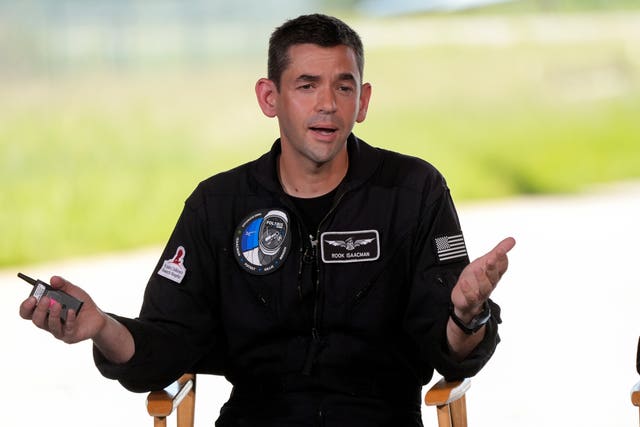SpaceX launches billionaire to carry out first private spacewalk
Unlike his previous chartered flight, this time tech entrepreneur Jared Isaacman is sharing the cost with SpaceX.

A daredevil billionaire rocketed back into space on Tuesday, aiming to perform the first private spacewalk and venture further than anyone since Nasa’s Apollo Moon missions.
Unlike his previous chartered flight, this time tech entrepreneur Jared Isaacman is sharing the cost with SpaceX, including the development and testing of new spacesuits to see how they perform in the harsh vacuum.
Mr Isaacman launched from Cape Canaveral in Florida before dawn on board a SpaceX Falcon 9 rocket, along with a pair of SpaceX engineers and a former Air Force Thunderbirds pilot.
If all goes to plan, it will be the first time private citizens have carried out a spacewalk, although they will not venture away from the capsule.

Considered one of the riskiest parts of spaceflight, spacewalks have been the sole realm of professional astronauts since the former Soviet Union opened the hatch in 1965, closely followed by the US. Today, they are routinely done at the International Space Station.
The spacewalk is scheduled for late on Wednesday or Thursday, midway through the five-day flight.
But first the passengers are aiming way beyond the International Space Station – an altitude of 870 miles (1,400km), which would exceed the Earth-lapping record set during Nasa’s Project Gemini in 1966. Only the 24 Apollo astronauts who flew to the Moon have ventured further.
The plan is to spend 10 hours at that height – filled with extreme radiation and riddled with debris – before reducing the oval-shaped orbit by half.
Even at a lower 435 miles (700km), the orbit would eclipse the space station and even the Hubble Space Telescope, the highest shuttle astronauts flew.
All four will wear SpaceX’s spacewalking suits because the entire Dragon capsule will be depressurised for the two-hour spacewalk, exposing everyone to the dangerous environment.
Mr Isaacman and SpaceX’s Sarah Gillis will take turns briefly leaving the hatch. The will test their white and black-trimmed custom suits by twisting their bodies.
Both will always have a hand or foot touching the capsule or attached support structure that resembles the top of a swimming pool ladder. There will be no dangling at the end of their 12ft (3.6m) tethers and no jetpack showboating. Only Nasa’s suits at the space station are equipped with jetpacks, and they are for emergency use only.
Pilot Scott “Kidd” Poteet and SpaceX’s Anna Menon will monitor the spacewalk from inside. Like SpaceX’s previous astronaut flights, this one will end with a splashdown off the Florida coast.
At a pre-flight news conference, Mr Isaacman – chief executive and founder of credit card processing company Shift4 – refused to say how much he invested in the flight.
“Not a chance,” the 41-year-old said.
SpaceX teamed up with Mr Isaacman to pay for spacesuit development and associated costs, said William Gerstenmaier, a SpaceX vice president who once headed space mission operations for Nasa.
“We’re really starting to push the frontiers with the private sector,” he added.
It is the first of three trips that Mr Isaacman bought from Elon Musk two-and-a-half years ago, soon after returning from his first private SpaceX spaceflight in 2021.
Mr Isaacman bankrolled that tourist ride for an undisclosed sum, taking along contest winners and a childhood cancer survivor. The trip raised hundreds of millions for the St Jude Children’s Research Hospital.
Spacesuit development took longer than anticipated, delaying this first so-called Polaris Dawn flight until now.
Training was extensive, with Mr Poteet saying it rivalled anything he experienced during his Air Force flying career.
As SpaceX astronaut trainers, Ms Gillis and Ms Menon helped Mr Isaacman and his previous team – as well as Nasa’s professional crews – to prepare for their flights.
Mr Isaacman said before lift-off: “I wasn’t alive when humans walked on the Moon. I’d certainly like my kids to see humans walking on the Moon and Mars, and venturing out and exploring our Solar System.”
Poor weather caused a two-week delay to the launch.
The crew needed favourable forecasts not only for lift-off, but for splashdown days later.
With limited supplies and no ability to reach the space station, they had no choice but to wait for conditions to improve.





